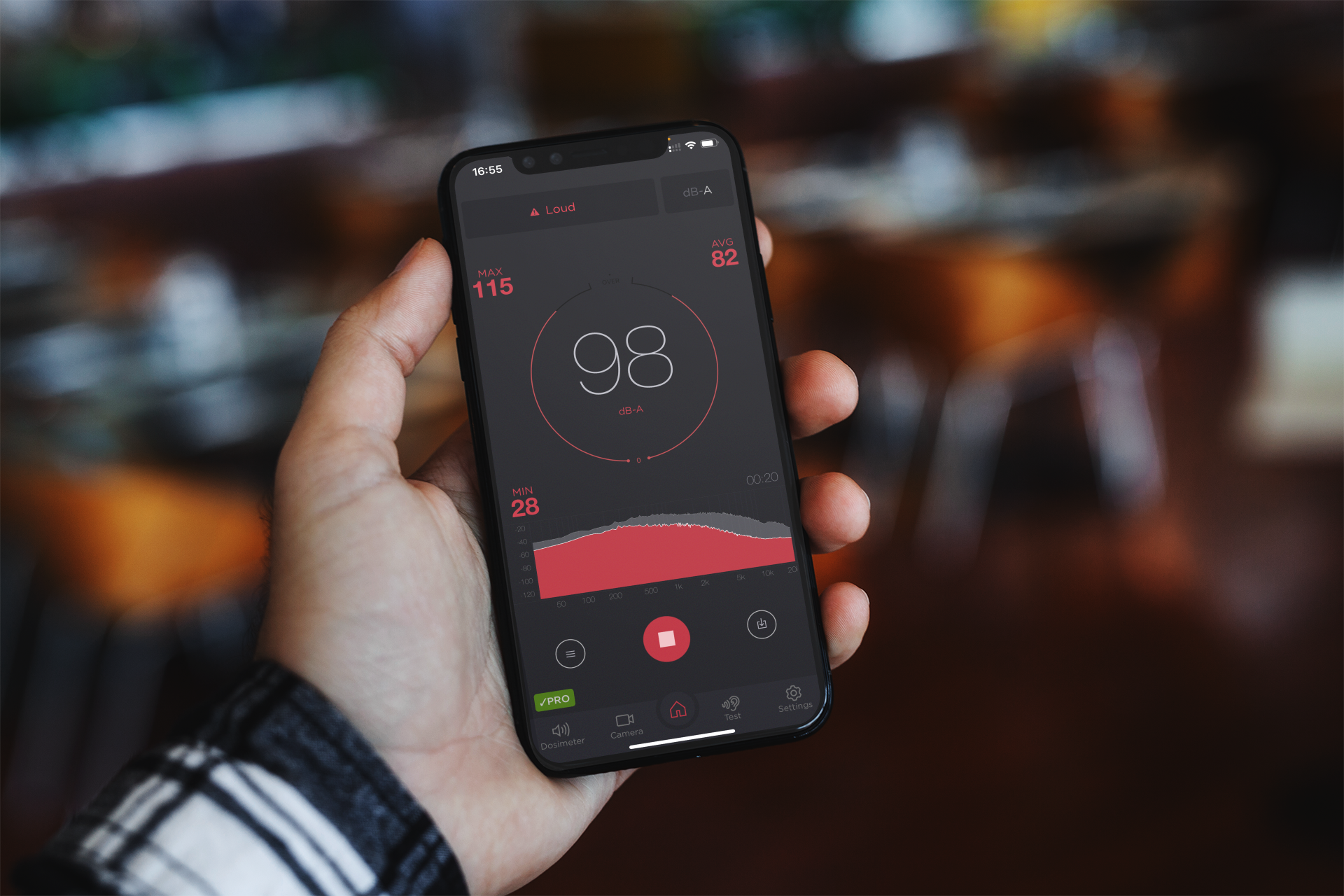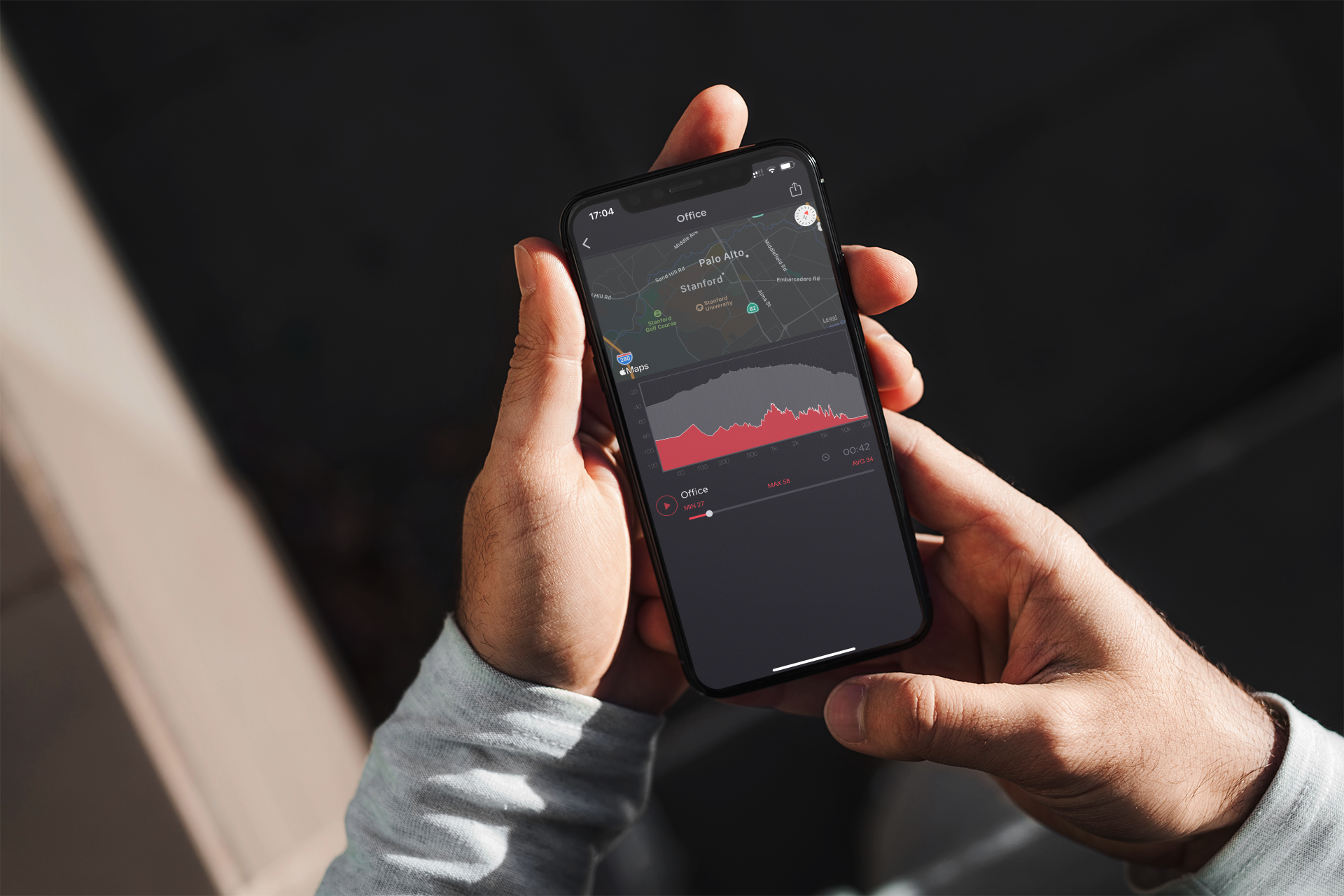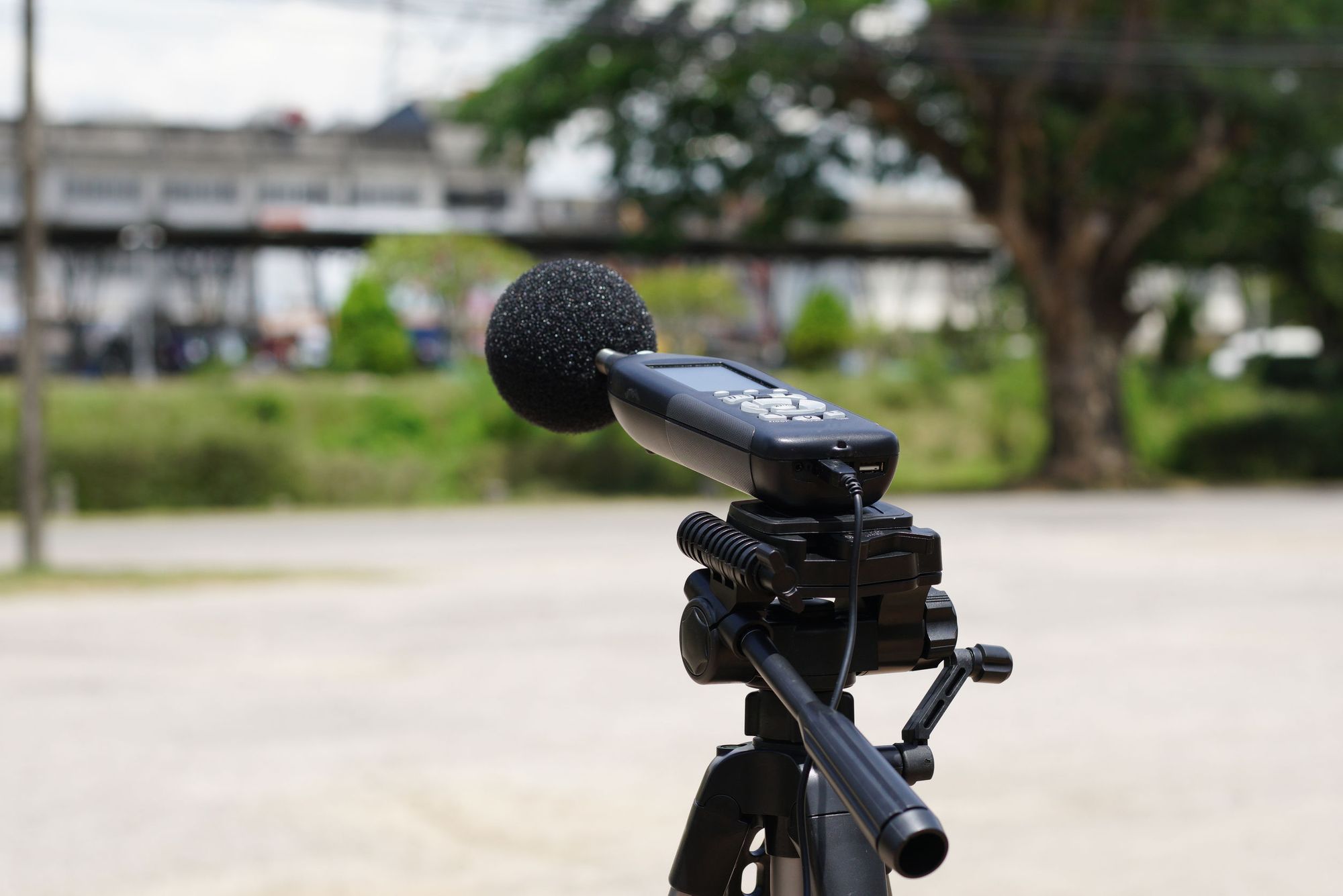When you try to measure the sound level of a noise that is further away, how far you are from the source will have a major impact on your sound level readings. It doesn’t matter if you use a hand-held professional sound level meter or a sound level meter app. The distance from the sound source will determine the reading on the sound level meter.
In this article, we are going to talk about how the intensity of sound changes depending on distance and how sound level meter readings will depend on the type of sound you are measuring and how close you are to the source of that sound.
When Measuring Distant Sounds Does It Matter What Sound Level Meter I Use?
Traditional sound level meters are hand-held devices with an external microphone, while sound level apps are downloadable on your smartphone and use the phone’s integrated microphone for measuring sound levels.
No matter what type of device you are using, sound is measured by calculating the pressure of the sound waves running from a source of noise through the air. And, even though a professional sound level meter has an external microphone and a sound meter app uses the smartphone’s built-in microphone, both of these noise measuring devices will give you different readings depending on how close their microphones are to the source of the sound.
If the mic is close to the source of the sound, the reading will be higher than if the mic is further away from the noise you are measuring. The closer the mic is to the source, the louder it will perceive the sound. So, how close the meter is to the source of the sound will be the most important aspect that will determine the pressure of the sound waves recorded by the sound level meter.
Understanding the Intensity of Sound Depending on Distance
You’ve probably noticed that the intensity of any sound will decrease as you move away from it. Think of sound like a sunbeam. It spreads out as it moves away from the source.
To put it in math terms, the sound level drops by 6 dB each time you double the distance from the source.
With sound level meters or sound level meter apps, the reading you will get will depend on your distance from the sound’s source. The closer you are to the source of the sound and the clearer the path to it (nothing deflecting the sound in any way), the higher your sound level meter reading will be. The further away you are, the lower your reading will be.
How Ambient Noises Affect Sound Level Meter Readings
Another aspect to take into account is what other ambient noises the sound level meter microphone may capture. If you are trying to determine the sound level of a noise that is mixed in with other noises, your reading will reflect the overall sound level, not just the sound level of one noise.
If you are trying read the sound level of an ambulance on the road and you are on the sidewalk, the ambient noises around you and closer to the microphone are more likely to influence the sound level reading than the sound of the ambulance that is further away.
The sound level meter will record the people talking around you, the sound of cars passing, construction noises, ambient sounds like birds or the wind. Therefore, it will deliver a reading of the overall sound level of all these sounds. To determine the sound level of only the ambulance siren, you would have to record it in an environment with nothing else around.
To get a better picture, here are some common dB readings you would get outside:
Breathing: 10 dB
Distant chatter: 40 dB
Close chatter: 60 dB
Traffic: 70-80 dB
Construction site: 80 dB
How Sound Level Meter Readings Work
When you measure the sound level of a noise, where the mic is compared to the source of the sound is what will determine your sound level meter reading. Although the readings will be different depending on where the sound level meter microphone is compared to the source of the sound, there is no wrong or right reading. Each reading will be correct for the position of the sound level meter at that time. And, the closer it is to the sound, the higher the reading will be.

How close to the sound source you make your measurement will depend on what the measurement is for. If you are trying to determine the sound level of a loud noise that you are being exposed to because you are worried that constant exposure may negatively affect your hearing, it is common practice to measure that noise from your position rather than the source of the sound. This will help better determine if the sound level that you are being exposed to is potentially harmful or not. Measuring it closer to the sound source will determine a higher reading that is more relevant to the sound level of that noise, not to the sound level affecting you.
When measuring sound with a meter or an app, the position of the microphone will also influence the sound level reading. Pointing it toward the source of the noise will give you a higher reading than placing the mic toward you.
Also take into account that even a small change in the position of the microphone or device will change the sound level meter reading. You can get different readings even when the position changes only slightly. You can also get different readings from two identical devices placed one next to the other. This does not mean that one reading is right and another one is wrong. Each of them will be correct for the specific position of the meter and the distance from the source of the sound.
So, placing the microphone as close to the source as possible and limiting any obstructions between the source and the meter will give you higher sound level readings, whereas measuring sound from further away or when the sound path is blocked will give you lower sound level readings.
Playing Back Sounds on Sound Level Meter Apps
Some apps have save, export, and playback options for recorded measurements.

High-frequency noises are sharper and much more audible. On the other hand, low-frequency sounds are the ones between 20-150 Hz. They are bass sounds and they are most often felt rather than heard. To put it more clearly, your body will feel the generated sound more than your ears will hear it.
When playing back the sounds recorded on a sound level meter app, higher-pitched noises and those that were closer to the mic at the time of the recording will be heard loudest. If you are playing the sounds back on the phone speakers, high-pitched sounds will be played back better than low pitched sounds because low frequency sounds need a subwoofer to be played back at the best quality.
For example, if you recorded your upstairs neighbor stomping, when you play back the recording you made on the sound level meter app, you won’t hear the stomping so loud. You will hear the ambient sounds in your room louder and the stomping less so



